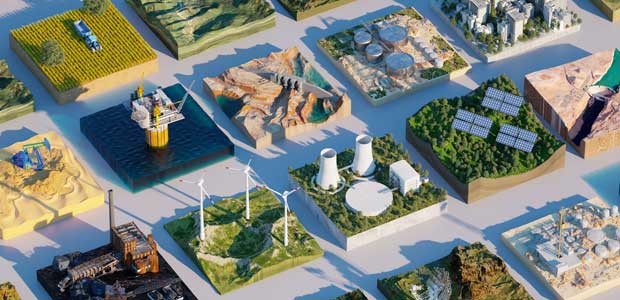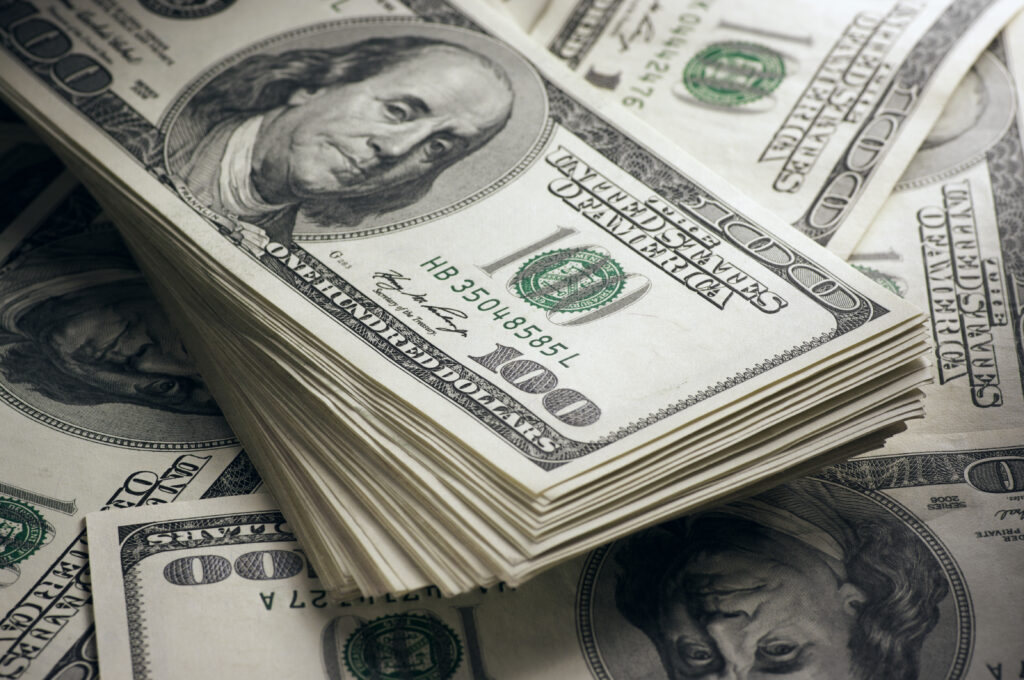Asia private equity 4Q analysis: Exits awakening?
- McDonald’s China buyback, Japan M&A offer hope on exits
- KKR-owned Kokusai Electric seals Japan’s largest IPO in five years
- Fundraising held back by pan-regional vehicle overhang
- Mid-cap GPs Five V, Anchorage, Novo Tellus win LP support
- Japan, Australia dominate Asia investment activity
- China, technology no longer the top geography, sector
1) Exits: Trade sales sustain second-half liquidity revival
Asia’s private equity industry spent much of the last year preoccupied with liquidity – or the lack of it. And in the second half, exits began to trickle in greater numbers.
There hasn’t been a renaissance: exit proceeds slipped from USD 118.9bn in 2021 to USD 81.1bn in 2022 to USD 49.9bn in 2023, according to provisional data from AVCJ Research. But a pandemic-hit total of USD 38.2bn in 2020 has been bettered. After a lacklustre USD 19.6bn in the first six months, GPs generated USD 15.1bn in the third quarter and matched it in the fourth quarter.
Even as sponsor-to-sponsor transactions, Asia’s mainstay of late, fell by more than half, a fourth-quarter resurgence in trade sales and one of the largest-ever buybacks made up the difference. There were 60 trade sales worth a combined USD 8.6bn, levels not seen in nearly two years. The big strategics are still mostly from within the region; of the top 25 exits in the quarter, only three featured ex-Asia buyers.
One of them, though, was the largest of the lot: McDonald’s paid USD 1.8bn to buy back the 28% stake in its mainland China master franchise that it sold to The Carlyle Group in 2017. The private equity firm secured a 6.7x return, having seen McDonald’s China double its store footprint while maintaining robust same-store-sales growth during the investment period.
Carlyle originally bought it alongside Trustar Capital and a CITIC Group entity, with McDonald’s retaining 20%. At one point, Carlyle was contemplating transferring a portion of the stake to its latest fund and spinning the rest into some form of co-investment vehicle. Trustar, which acquired part of CITIC’s holding several years ago and now owns 52% of McDonald’s China is still pursuing this deal structure.
China is responsible for six of the 25 largest exits from the fourth quarter. McDonald’s China is joined by Gracell Biotechnologies, which was picked up by AstraZeneca for around USD 1bn in what is described as the first acquisition of Chinese biotech company by a member of the big pharma elite. The company listed in the US two years ago, but several private investors remained in the cap table and made exits.
Meanwhile, Japan led the way with eight exits, including two for Polaris Capital Group. Sogo Medical and Hitowa Holdings, went to pan-regional private equity players for USD 1.2bn and USD 632m. In a demonstration of the growing prevalence of sponsor-to-sponsor transactions, CVC Capital Partners, which bought Sogo, sold Hitowa to Polaris four years ago. Hitowa is now owned by MBK Partners.
Bain Capital’s Japan team contributed another two deals. Nursing care service provider Nichii Holdings and Japan Wind Development were sold to Nippon Life Insurance and Infroneer Holdings, respectively, each for around USD 1.4bn. They represent the second and third largest exits for the quarter as well as sizeable – 8x and 10x – and rapid returns for Bain’s fourth fund, which closed as recently as late 2018.
The GP originally acquired Japan Wind in 2015 via its second Asia fund, backing a privatization. The company developed a portfolio of wind farms that were sold to a strategic investor. Bain retained the team and platform, which were transferred to Fund IV and the process began again – although at one point, pipeline challenges meant the investment was held at below cost, according to industry sources.
The fourth quarter saw six exits of USD 1bn or more, with TPG Capital receiving USD 1.2bn from Sumitomo Life for its minority stake in Singlife. Energy Exemplar, an Australia-based power industry simulation software provider acquired by The Blackstone Group and Vista Equity Partners, just fell short of this threshold. But it likely represented a whole fund return for the seller, The Riverside Company.
Japan also made its mark on private equity-backed IPOs. Most of the action remained on mainland China exchanges, but Kokusai Electric and two Indian companies – Cello World and Mamaearth – were among the 10 largest offerings of October-December 2023. IPO proceeds for the region came to USD 13.4bn, just eclipsing the third quarter. The annual total came in at USD 48.9bn, down from USD 62.3bn in 2022.
Kokusai Electric represents Japan’s largest IPO in five years and a significant windfall for KKR. The company was one part of Hitachi Kokusai Electric, which the private equity firm acquired for JPY 322bn (then USD 2.9bn) in 2017. The other part was shared with and ultimately sold to co-investors.
Hitachi Kokusai listed – after a trade sale exit collapsed in 2021 – with a market capitalisation of JPY 541.5bn (USD 3.7bn). KKR received all the IPO proceeds and retained a 43.9% stake.
2) Fundraising: Bain defies Asia-wide downturn
PAG, CVC Capital Partners, TPG Capital, and The Carlye Group all launched their latest pan-Asian funds before Bain Capital went to market with its fifth vehicle in mid-2022. About 16 months later, Bain completed its fundraising with USD 7.1bn in commitments, beating the USD 5bn target. The other GPs are still in the market, some having extended their fundraising periods or modified their targets.
This overhang at the large end of the market helped shape Asia private equity fundraising in 2023. Excluding renminbi-denominated fund space, which is to some extent characterised by mega government guidance funds, Bain was one of only three managers to achieve a final close above USD 3bn. One of the others, Primavera Capital Group, raised most of its capital prior to the Ukraine war.
Managers in the region raised USD 111bn, down from USD 148bn in 2022. Strip out renminbi funds and the total reaches USD 56bn, down from USD 108.8bn. It is the weakest annual showing in a decade.
Approximately USD 11.7bn was committed between October and November to Asia-focused, ex-renminbi funds. It isn’t the weakest quarter of the year – a paltry USD 8.9bn was raised in the first three months of the year, but it is still roughly half the average for the prior eight quarters. Some of the micro stories underscore broader fundraising themes of 2023.
Limited large-cap activity means that Bain alone accounts for 61% of the fundraising total. Managers with narrower geographic mandates, reasonably distinct strategies, and an actual or intended bias towards control transactions feature prominently in the largest funds raised in the quarter.
Five V Capital took just three months to hit the hard cap of AUD 770m (USD 516m) on its fifth Australia and New Zealand buyout fund. Anchorage Capital Partners was also reasonably swift in securing AUD 505m (USD 317m) for its fourth turnaround fund that targets the same geographies.
In Southeast Asia, Novo Tellus Capital Partners raised USD 510m for its third industrial technology-focused fund – having initially set out to raise USD 375m – while there were final closes for Gaja Capital in India and fellow mid-cap players Mercuria Investment and Daiwa House Group in Japan.
Only one US dollar-denominated China fund qualified for the top 10: CBC Group completed a USD 375m second close on its debut healthcare infrastructure vehicle, taking the overall total to USD 875m. A few other closes took China fundraising for the quarter to about USD 400m; the average for the eight prior quarters was USD 4.9bn.
It has been an immensely challenging year on the US dollar side with commitments amounting to USD 11.6bn compared to USD 24.3bn in 2022. (Renminbi fundraising rose slightly from USD 39.6bn to USD 55.1bn.) There were only about 20 incremental or final closes for US dollar funds, with five managers achieving final closes of USD 300m or more.
These include HighLight Capital, which secured USD 550m for its fourth life sciences fund, short of the USD 650m target but exceeding the USD 435m raised in the prior vintage. It represents a success story given the current environment. Almost all the capital went into a first close completed towards the end of 2022 – this was followed by 12 months in which only USD 20m was added in aggregate.
3) Investment: Japan underlines status as hottest geography
Having reached USD 48.3bn in the first three months of 2023, a relatively low number by recent standards, Asia private equity investment declined in successive quarters. The trend continued in October-December during which USD 31.5bn was put to work.
Investment for the entire year came to USD 155.7bn, down from USD 222.3bn in 2022. The total is comparable to 2019, but any suggestion of a return to a pre-pandemic norm would likely be confounded by the amount of dry powder accumulated in the interim. There is ample capital sitting on the sidelines, waiting for an opportune moment to deploy.
China activity was inevitably muted, with investment falling from USD 66.8bn to USD 44.3bn. Improvements in the second and third quarters were undone in the fourth when deal flow amounted to USD 8.9bn – nearly the same as the first three months of the year. Only one China transaction made it into the top dozen deals for the fourth quarter and that was a PIPE for electric vehicle manufacturer Nio.
Nine of the 12 deals were in split between Japan and Australia. Japan attracted more capital than any other market, receiving USD 10.6bn – or nearly one-third – of the regional pool. China came second with Australia third on USD 4.3bn.
The five Japanese deals included four of five region-wide that surpassed USD 1bn. Each of the three largest were tender offers for public companies. Japan Investment Corporation (JIC) led a USD 2.7bn bid for Shinko Electric Industries that will ultimately allow the company to separate from Fujitsu, while Bain Capital and EQT Private Capital Asia launched tenders for Outsourcing and Benesse Holdings.
Japan, which is also responsible for five of the seven largest private equity deals announced in Asia in 2023, ended the year as the region’s leading investment destination, edging China by USD 45.9bn to USD 44.3bn. China last ceded top spot in 2007, at the peak of the pre-global financial crisis buyout bonanza, when it was bettered by India, Japan, and Australia.
Japan was the only major geography to see more deal flow in 2023 than 2022. South Korea came close, posting USD 18bn versus USD 21.2bn a year earlier.
On a sector basis, industrial manufacturing – when broadly defined, which means including electronics – ended technology’s long reign as Asia’s biggest investment magnet. The Toshiba take-private accounted for 38% of the USD 41.7bn deployed in industrial manufacturing in 2023. The technology sector, still suffering from the decline in growth capital activity, received USD 40.1bn.



















